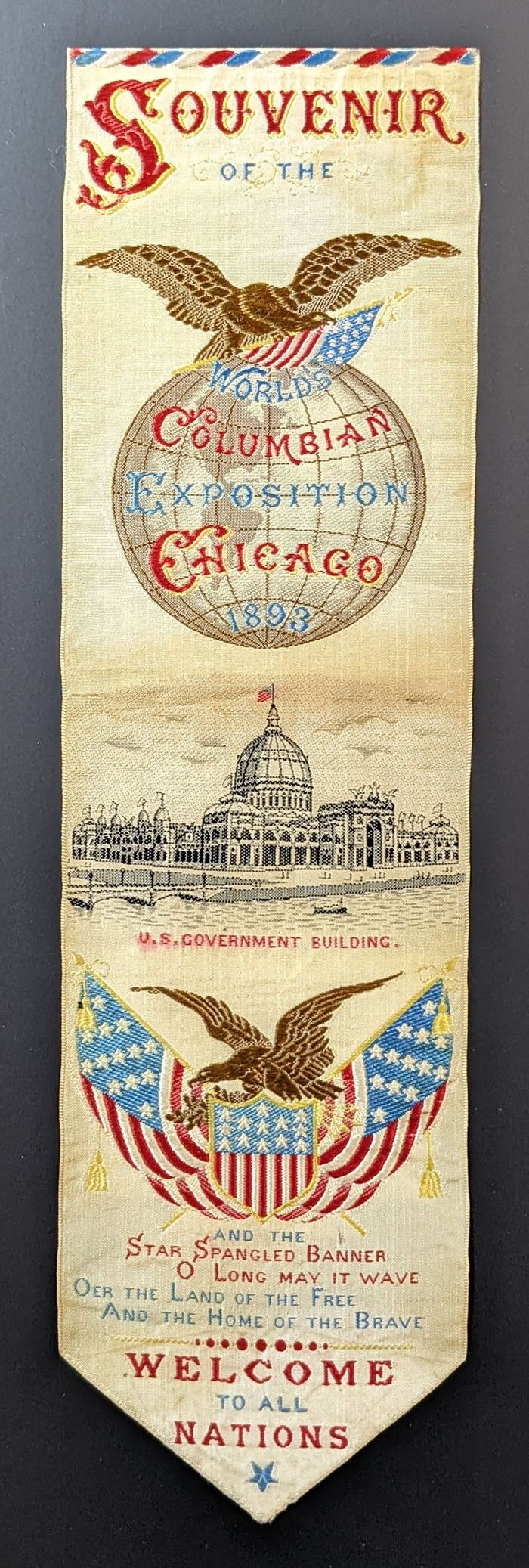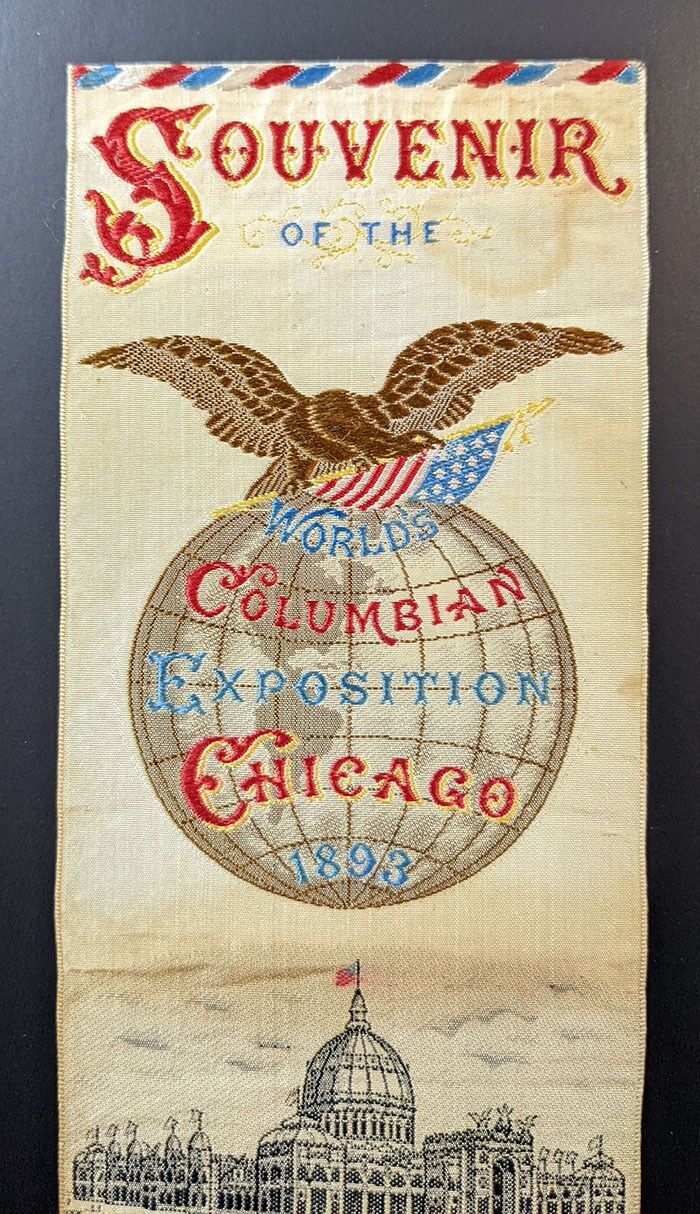No products in the cart.
1893 COLUMBIAN EXPOSITION Welcome All Nations Eagle STEVENGRAPH Bookmark Ribbon
$299.00
Out of stock
1893 COLUMBIAN EXPOSITION Welcome All Nations Eagle STEVENGRAPH Bookmark Ribbon
Original souvenir silk ribbon from Columbian Exposition. The “Souvenir of the…” version, reference SB 1862. Very vibrant colors.
“Souvenir of the”. Eagle on globe image with “Worlds Columbian Exposition Chicago 1893”. Image of building. “U.S. Government Building” Image of early American flags crossed with eagle. “And the Star Spangled Banner O Long May it Wave Oer the Land of the Free and the Home of the Brave. Welcome to All Nations.”
The silk is in great condition! A beautiful piece considering the age and rarity! Overall discoloration, slightly darker than standard. Discoloration near top, right of “of the” and at the end of “Souvenir”. Please see photos for complete details. Approximately 2.5625″ wide, 9.125″ tall. Excellent rare variety!!
The item you see pictured here is the exact item you will receive.
About Stevengraphs:
In the mid-19th century the town of Coventry, England, was the center of a ribbon weaving industry. In 1860 the Cobden–Chevalier Treaty was signed; this free trade treaty introduced new competition into the industry, leading to a collapse in the local economy.
Thomas Stevens, a local weaver, responded by adapting the Jacquard looms used in Coventry to weave colorful pictures from silk. By 1862, Stevens could produce four different designs and by the late 1880s this had grown to over 900; they became known as “Stevengraphs”, after their maker. Many of these designs were used to produce bookmarks, while others were used to make greeting cards and other silk objects.
By the 1930s, Stevengraphs were considered collectable items. During the Second World War, Coventry was attacked by German bombers; on 14 November 1940 the Coventry Blitz occurred, destroying the Stevens factory and apparently all records of the Stevengraphs.
In the late 1950s it emerged that Henry Stephens, a descendant of Thomas, had saved one of the pattern books the night before the attack and kept it in safe storage; Henry donated it to the Coventry City Council, who in turn entrusted it with the Herbert Art Gallery and Museum. Stevengraphs became valuable, with more male collectors entering the hobby. Prices rose, particularly for unusual or rarer images less popular during the Victorian period.
Stevengraphs normally measured 140mm x 64mm (5½ x 2½ inch) and were often mounted on cardboard. A printed label on the reverse would indicate that the design was registered and could not be copied. Several other Coventry firms also produced silk-work pictures including W H Grant and Welch & Lambton.
Related products
$2,950.00
$2,095.00
$2,195.00
World's Fair Memorabilia
1876 PHILADELPHIA CENTENNIAL George Washington Eagle STEVENGRAPH Bookmark Ribbon
$229.00
World's Fair Memorabilia
1884 INDUSTRIAL AND COTTON CENTENNIAL Exposition w/Grover Cleveland Ribbon RARE!
$299.00
$1,895.00
$2,095.00



